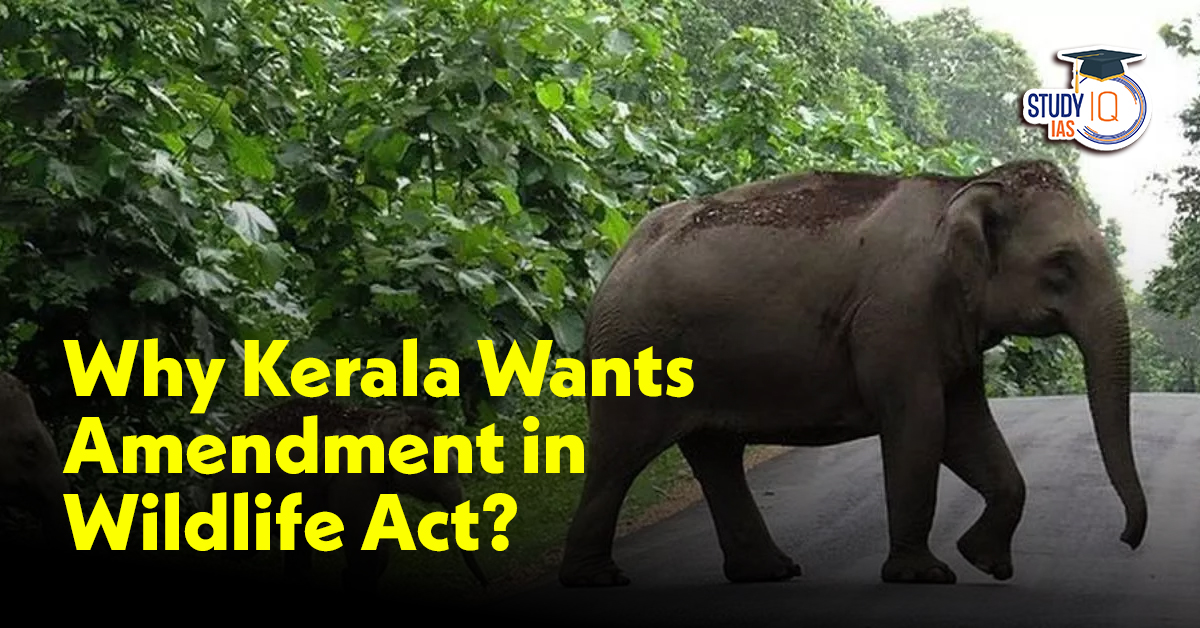Table of Contents
Context: Kerala wants the Wildlife (Protection) Act, 1972, amended so it can be allowed to kill wild animals that foray into human habitats.
Why Kerala Wants Amendment in Wildlife (Protection) Act, 1972: Reasons
Rising Human-Wildlife Conflict:
- Hotspots: 273 out of 941 villages identified as conflict zones.
- Casualties: 919 deaths, 8,967 injuries (2016-2025).
- Problematic species: Tiger, leopard, elephant, wild boar, bonnet macaque, peafowl.
Population Explosion of Certain Species:
Uncontrolled increase in wild pigs and bonnet macaques, leading to frequent raids on crops and property damage.
Failure of Preventive Measures:
- Traditional methods like fencing and translocation have failed to control conflict effectively.
- The current wild boar control system (licensed shooters) has proven ineffective due to impractical guidelines.
Legal and Administrative Constraints:
- Stringent procedures under existing laws create delays and prevent timely interventions.
- Court orders and regulations restrict quick action against wild animals.
Also Read: Wildlife (Protection) Act, 1972
Existing Provisions under Wildlife (Protection) Act, 1972
Objective of the Act:
- Protection and conservation of wildlife and habitats.
- Prevention of poaching, hunting, and illegal trade of wildlife.
Schedule System:
- Schedule I and II: Highest protection. Hunting, killing, or trading animals under these schedules is strictly prohibited, except under specific cases authorised by the Chief Wildlife Warden.
- Schedule III and IV: Lesser protection, but hunting is regulated.
- Schedule V: Animals considered vermin can be hunted with fewer restrictions.
- Schedule VI: Protection for specific plants.
Authority and Powers:
- Chief Wildlife Warden is empowered to permit killing only if:
- Animal cannot be captured or relocated safely.
- Animal poses an immediate danger to human life.
- District Collector (Executive Magistrate): Has powers under the CrPC to manage public nuisances but faces legal limitations in wildlife cases.
Special Conditions for Protected Animals (Schedule I):
Animals under Schedule I require special permissions and adherence to the advice from:
- National Tiger Conservation Authority (NTCA) for tigers.
- Project Elephant guidelines for elephants.
Provision for Declaring Species as Vermin (Section 62):
- The Central Government may declare certain animals as “vermin” for specific periods and areas.
- This temporarily relaxes hunting restrictions to control populations threatening human life or agriculture.


 Bonnet Macaques: Habitat, Features, Beha...
Bonnet Macaques: Habitat, Features, Beha...
 Periyar Tiger Reserve, Map, Flora, Fauna...
Periyar Tiger Reserve, Map, Flora, Fauna...
 Project Cheetah in India, Objectives, Ch...
Project Cheetah in India, Objectives, Ch...

























